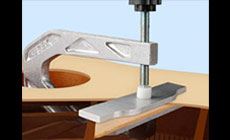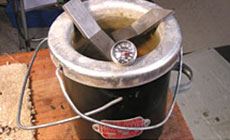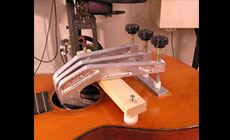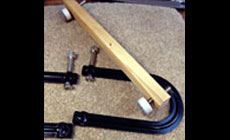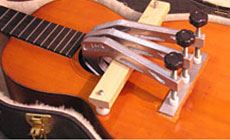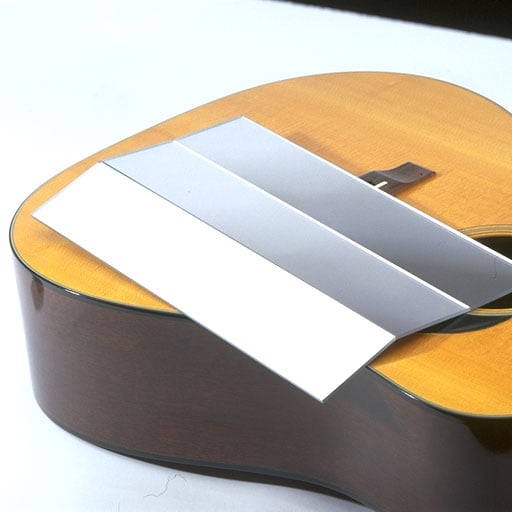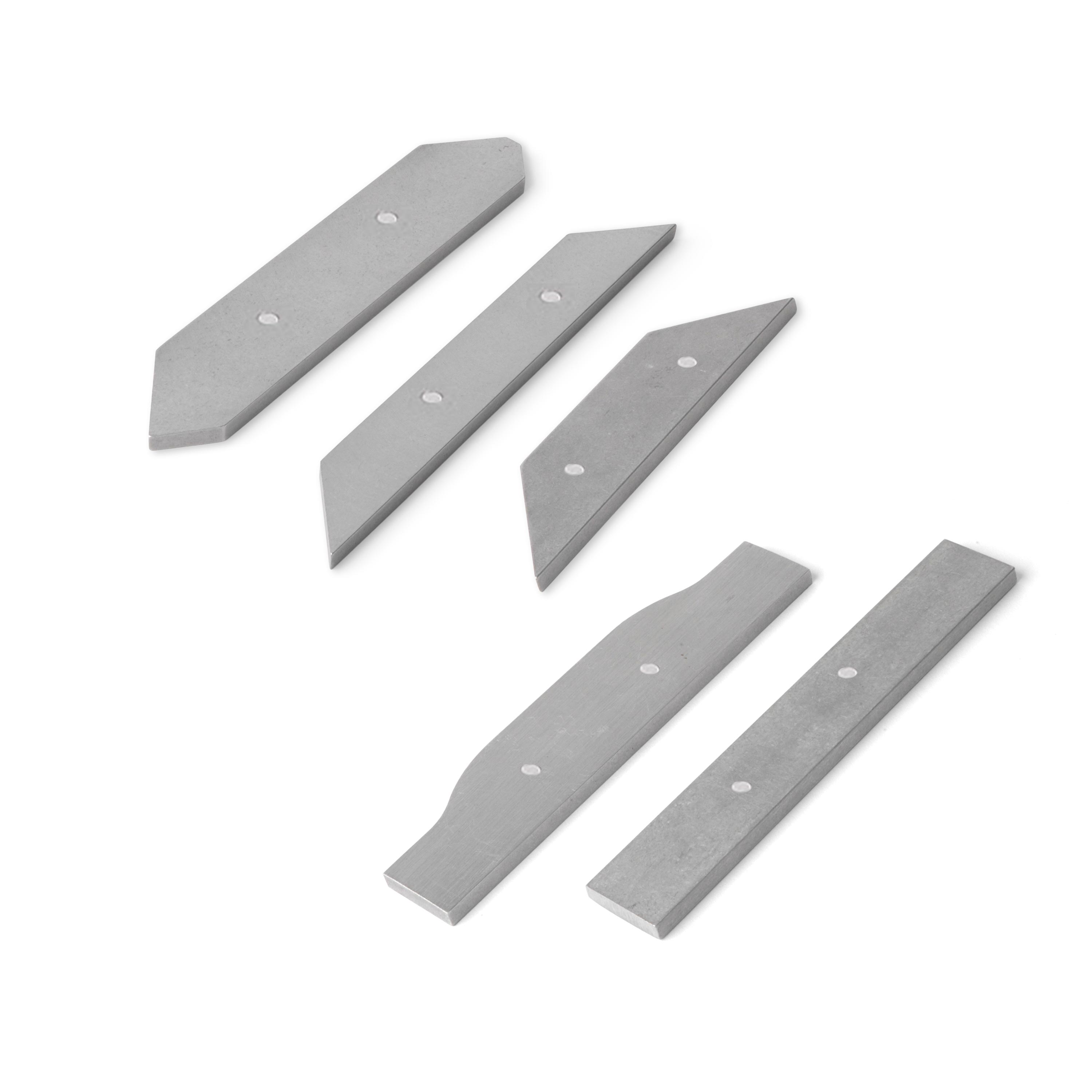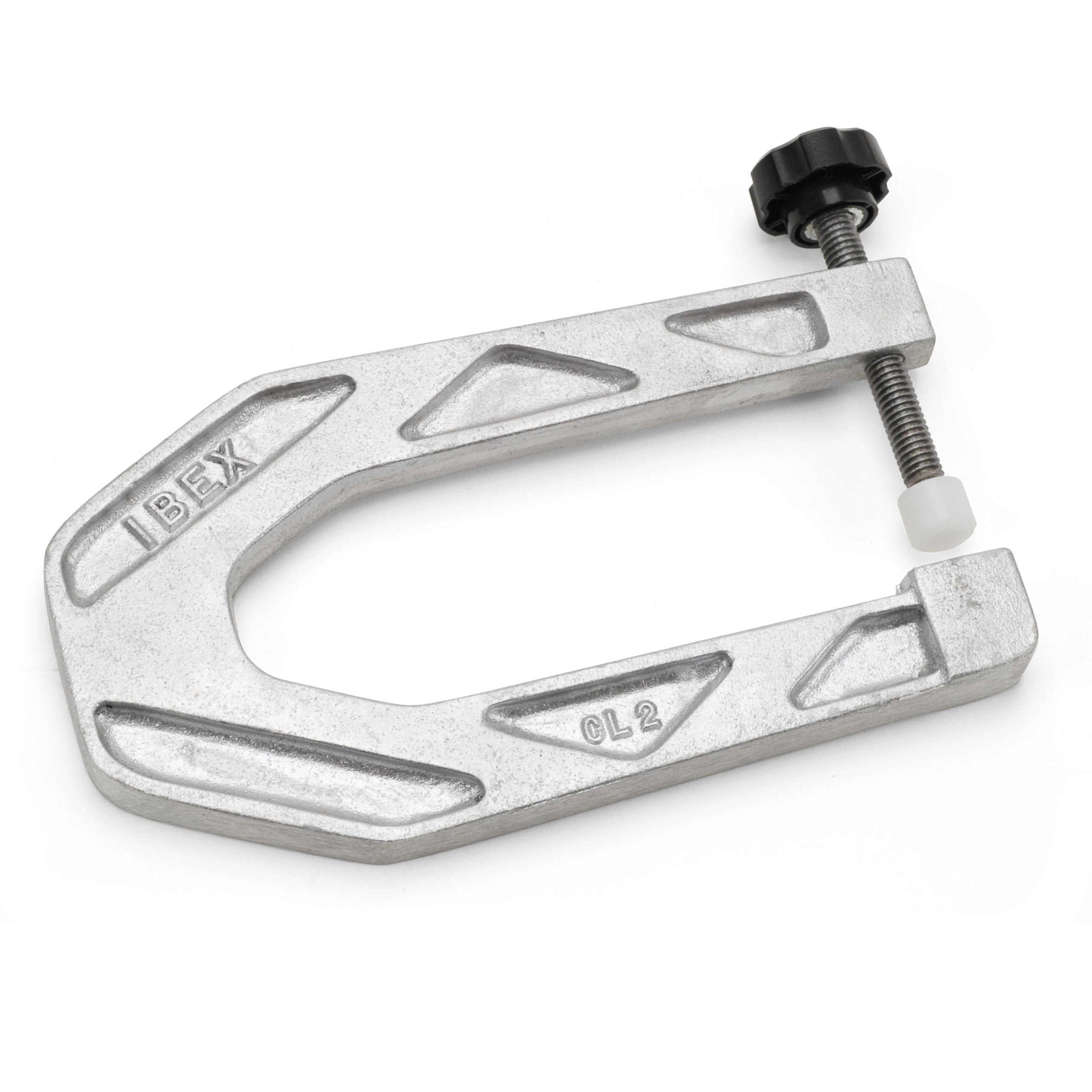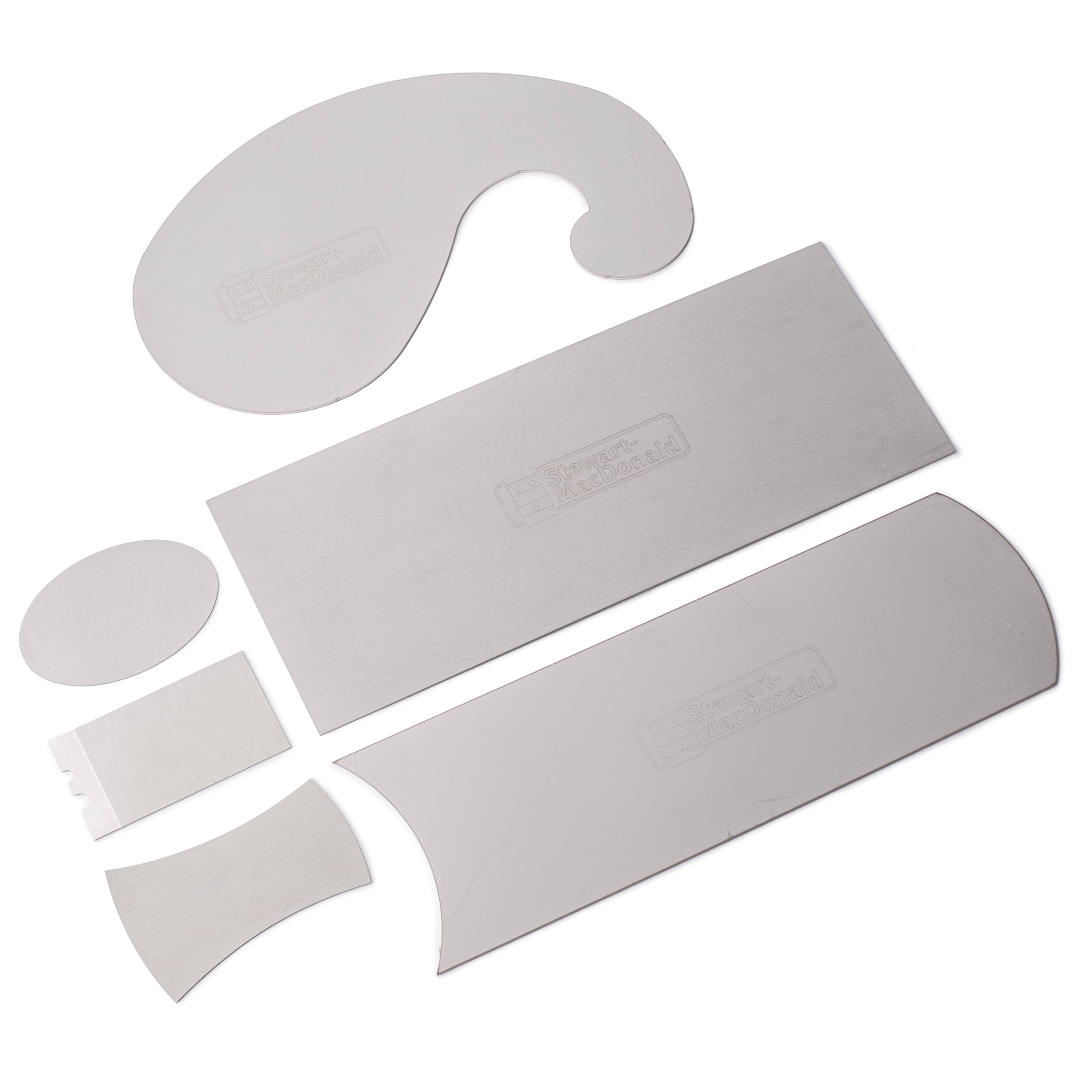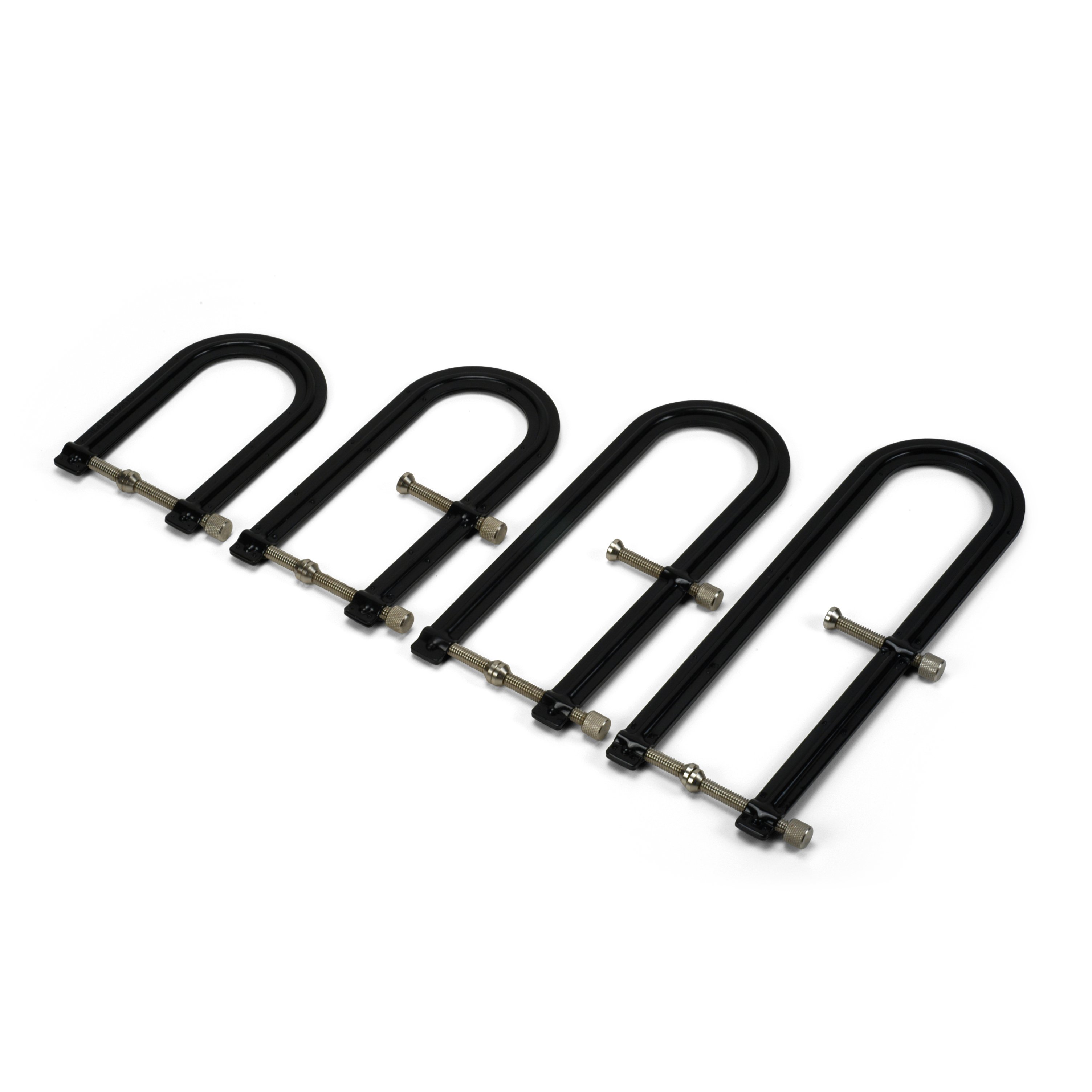Fixing a potbelly with the Belly Reducer
The back of the bridge starts pulling up while the front pushes down, and the top wood is pulled along with it. This creates a hump, or potbelly. Over time, this bellying can even result in the bridge becoming unglued. That was the situation with this 1928 Martin 0-18 I worked on last week. To flatten the bridge area, I used the Belly Reducer invented by T.J. Thompson, a tremendous builder and repairman. Before we get into the flattening part, let me show you a special problem with this guitar: the entire top, bridge and all, had been slathered with a thick orange epoxy finish. In order to get at the bridge, I had to excavate it from the depths of this plastic. I chipped off as much of the resin as I could so the bridge wouldn’t be completely connected to the top. Here’s the story: “This is my dad’s old Martin, and it’s in rough shape. Dad made his living with it during the Depression and well into the 1950s. When the bridge came loose in the ’40s, he reglued it. It came loose again in the ’50s, so he had it replaced. In the ’60s it came loose a third time and also split between the bridge pin holes. That time, dad glued it on with fiberglas resin, painting over the entire top to hold the bridge down; then sealing it with orange shellac! It hasn’t played well since. I’d like a new bridge, and I don’t care what it looks like — I just want to play it.” I protected the top by cutting a formica guard to fit around the bridge. Then I stacked up flat cauls on each side of the bridge to build a platform supporting the router. I routed in numerous light passes until very little of the bridge remained. A hint of spruce was exposed along with a lot of fiberglas resin, which apparently was used to patch missing spruce. Patiently, I leveled it with a curved mini-scraper. The resin was mounded 3/32" high at the edges, requiring a chisel. This left visible marks, but this customer asked for playability over clean looks. With the bridge area reasonably clean and level, it’s time to flatten the top. Here, looking through the sound hole into an inspection mirror, you can see the bridge plate. It’s thin and delicate, so it will respond well to the Belly Reducer. The idea is, a set of matched cauls are heated and clamped to the bellied area. The cauls are curved so they bend the wood, counteracting the belly curve. The effect of the Reducer isn’t drastic, but it’s critical to fine guitars, as T.J. Thompson explains: “I had to do something when vintage guitar prices started to skyrocket, because the first question a dealer asks is, ‘Has the bridge plate been replaced?’ “Not long ago you could buy OM-18 guitars for $3,500. Now they’re about $35,000 and just changing the bridge plate lowers that value by about $3,500. I didn’t want to be the guy who replaced the bridge plate, lowering the value by as much the whole guitar cost before! The Reducer fixes the belly and leaves the bridge plate intact.” The two narrowest reducer cauls fit the bridge plate and bridge area perfectly; I heated them in my electric glue pot filled with water. After wetting the bridge plate and any exposed top spruce under the bridge with a sponge dipped in hot water. I slipped on leather work gloves and clamped the hot flatteners in place with 3 Ibex bridge clamps for power. To keep the weight of the clamps from distorting the top in the direction of the kink, I supported them with a scrap of wood. I drilled and tapped the wood to accept these adjusters borrowed from a pair of soundhole clamps. I set the guitar in its case and let it dry for 24 hours. When I took the clamps off, I was pleased with the results — a much better surface to glue a new bridge onto!Sometimes a guitar top reacts to string tension by “bellying.”

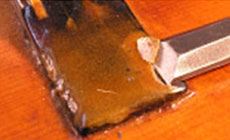
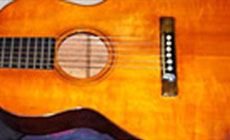
I asked my customer, “Why was this guitar drenched in plastic?”
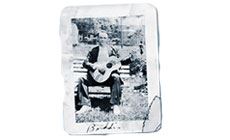
To get the old bridge off, I used a router.
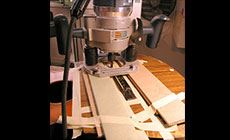
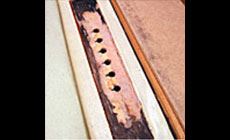
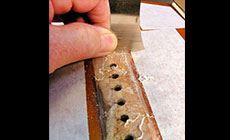
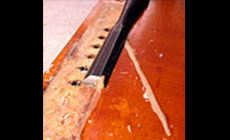
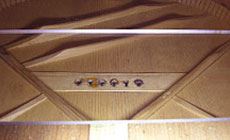
Here’s the Belly Reducer.
